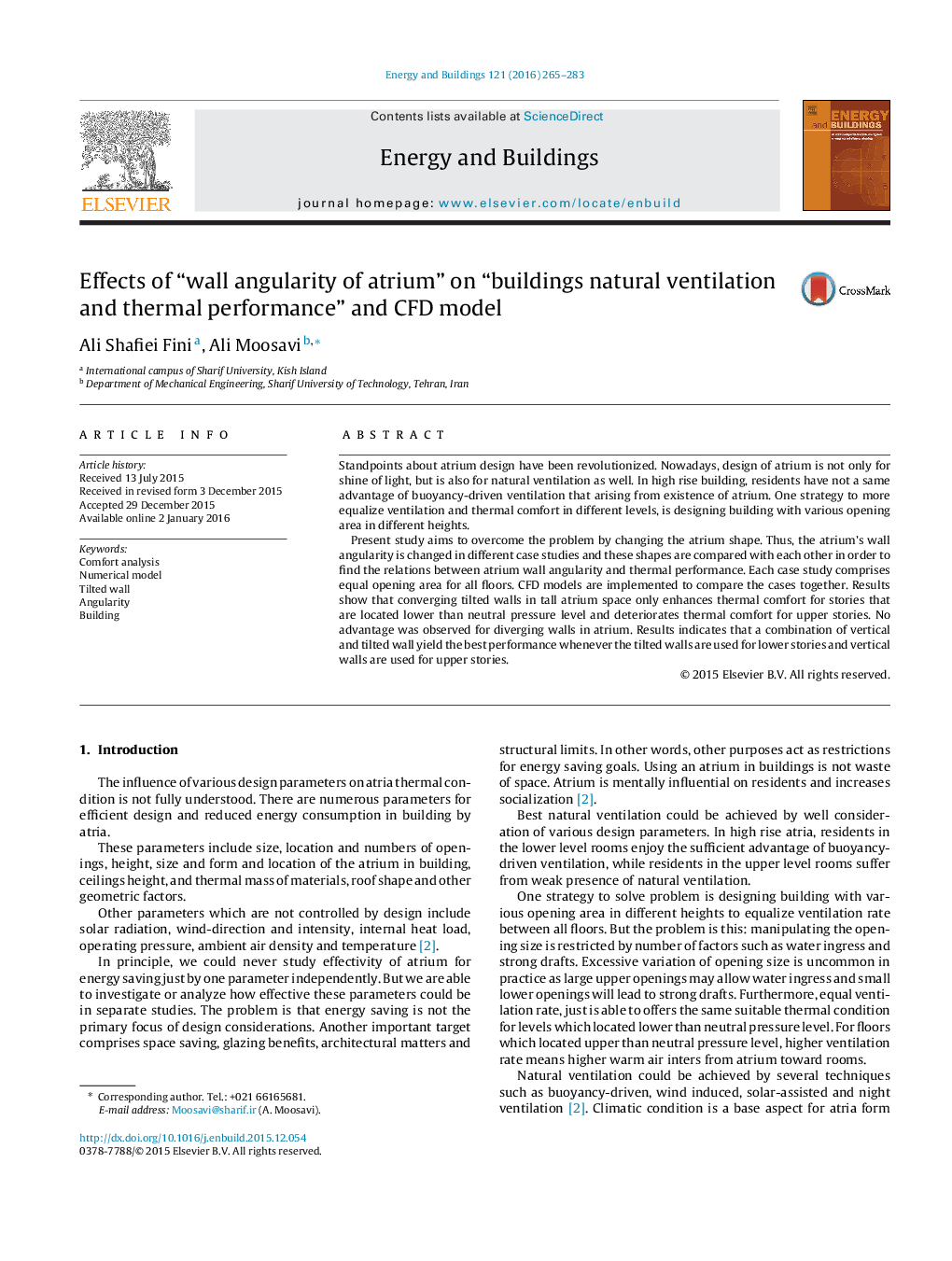| کد مقاله | کد نشریه | سال انتشار | مقاله انگلیسی | نسخه تمام متن |
|---|---|---|---|---|
| 262191 | 504014 | 2016 | 19 صفحه PDF | دانلود رایگان |

• Simulation of simple two storied building connected to the atrium with CFD and validation with previous analytical developed models.
• Finding the relations between tilted wall and temperature distribution for each story (just for ten-storied).
• Finding optimal wall shape for better passive cooling for all stories (just for ten-storied and between 4 different case studies).
• Using simulation for buildings by different story numbers (ten-storied and three-storied buildings).
• Simulation of cylindrical atrium building with glass roof by solar radiation effect.
Standpoints about atrium design have been revolutionized. Nowadays, design of atrium is not only for shine of light, but is also for natural ventilation as well. In high rise building, residents have not a same advantage of buoyancy-driven ventilation that arising from existence of atrium. One strategy to more equalize ventilation and thermal comfort in different levels, is designing building with various opening area in different heights.Present study aims to overcome the problem by changing the atrium shape. Thus, the atrium's wall angularity is changed in different case studies and these shapes are compared with each other in order to find the relations between atrium wall angularity and thermal performance. Each case study comprises equal opening area for all floors. CFD models are implemented to compare the cases together. Results show that converging tilted walls in tall atrium space only enhances thermal comfort for stories that are located lower than neutral pressure level and deteriorates thermal comfort for upper stories. No advantage was observed for diverging walls in atrium. Results indicates that a combination of vertical and tilted wall yield the best performance whenever the tilted walls are used for lower stories and vertical walls are used for upper stories.
Journal: Energy and Buildings - Volume 121, 1 June 2016, Pages 265–283